PhD students |
2019 Torben Lode
The project was a collaboration between members of Section for Aquatic Biology and Toxicology.
|
2018 Daniel Hitchcock
Daniel's PhD thesis is titled "Life history and pollutant accumulation and wildlife". He was interested in how variation in life-history affects contaminant levels in different species. For example, how do animals allocate energy toward reproduction? How does this affect contaminant levels? What differences do we see between males and females? Daniel investigated reproductive strategy in marine mammals (seals, sea lions and walruses) and compared pollutant levels between mothers and pups. He also looked at maternal investement in seabirds and compared males and females. Lastly, he conducted a field study on barnacle geese (Branta leucopsis), investigating the effects of migration strategies on pollution in eggs. Daniel is an Australian who undertook his Bachelor degree at the University of Melbourne and Master degree at the University of Bergen. Daniel's supervisors were Katrine Borgå (UiO), Tom Andersen (UiO) and Øystein Varpe (UNIS). |
Master of Science students |
2020 Anjali Gopakumar
|
2020 Gunvor Evenrud
|
2019 Clare Andvik (McEnally)
Clare's project was a collaboration with Norwegian Orca Survey and the Norwegian University of Life Sciences. Clare is originally from England, and moved to Norway in 2014. She also completed her bachelors in biology at the University of Oslo. Clare's supervisors were Katrine Borgå (UiO), Eve Jourdain (Norwegian Orca Survey), Anders Ruus (UiO), Jan Ludvig Lyche (NMBU). After her masters, Clare worked as research assistant on a screening project for levels of legacy and emerging contaminants in various whale species along the Norwegian coast, funded by the Climate and Environment department's Arctic 2030 programme. |
2019 Malin Røyset Aarønes
Malin found that clothianidin was taken up in the body and the head (the brain) of the bumblebees, and it seemed to have an effect on nectar consumption and food storing. However, she did not find a change in mortality or reproduction, which could be due to short exposure time. Malin's thesis was a part of the NEOPOLL project, which works to determine the effects of neonicotinoids and temperature on crop pollination. The project was a collaboration between the University in Oslo, the Centre for Agri-Environmental Research in Reading, UK, the NUI Gallway in Irland, and the Norwegian Institute for Water Research (NIVA). Malin's supervisors were Katrine Borgå (UiO), Bert van Bavel (NIVA), Anders Nielsen (UiO), and Julie Sørlie Paus-Knudsen (UiO). After her masters, Malin worked as a research assistant on the NEOPOLL project and Regional Monitoring report for Western Europe. |
2019 Nina Knudtzon
Nina found higher concentrations of lipophillic contaminants in eggs compared to the mother, suggesting maternal transfer. Furthermore she found higher levels of PFAS in the outer fjord gulls, likely due to airport activity. There was a more marine diet and higher trophic niche in outer Oslofjord gulls than in inner Oslofjord gulls. This master project was a part of a bigger project called Urbanfjord, which is a collaboration between the Norwegian Institute of Water Research (NIVA), the Norwegian Institute of Air Research (NILU) and the University of Oslo (UiO). It is funded by the Norwegian Climate and Environmental Agency (Miljødirektoratet). The Urbanfjord project monitors pollution status of the marine food web of the inner Oslofjord. Nina's supervisors were Katrine Borgå(UiO), Anders Ruus (UiO) and Morten Helberg (UiO). |
2019 Helene Thorstensen
Helene compared contaminant levels in the herring gull (Larus argentatus) with the eider duck (Somateria mollissima) to look for differences that could potentially be of importance for monitoring. She found higher levels of contaminants in the marine feeding eider duck than the terrestrially influenced herring gull. However changes could also have been due to breeding ecology and life history traits, and not directly linked to ecological niche. Helene's master project was part of the monitoring project Urbanfjord funded by the Norwegian environmental agency (Miljødirektoratet), and is a cooperation between the Norwegian Institute for Water Research (NIVA), the Norwegian Institute for Air Research (NILU) and the University of Oslo (UiO). The Urbanfjord project monitors pollution status of the marine food web of the inner Oslofjord. Her supervisors were Katrine Borgå(UiO), Anders Ruus (UiO) and Morten Helberg (UiO). After her masters, Helene worked as a research assistant on several projects including Urbanfjord, NEOPOLL and Nansen Legacy. |
2019 Emelie Skogsberg
Her thesis was a part of a bigger project called TerrACE, which is a collaboration between several Norwegian and North American partner institutes. The TerrACE project stands for ”Effects of terrestrial inputs on contaminant dynamics in Arctic coastal ecosystems”. Therefore, this project focuses on climate change mediated effects, such as terrestrial runoffs, resulting in contaminant remission from land, contaminant uptake, accumulation and food web transfer in coastal biota, occurring at the land-sea interface. Emelie's supervisors were Katrine Borgå (UiO) and Øystein Varpe (UNIS). |
2019 Laura Andrea Alfaro Garcia
Laura's master thesis is titled "PFAS bioaccumulation in Antarctic breeding south polar skua (Catharacta maccormicki) and its prey items". Laura compared the occurence of PFAS in two Antarctic populations of south polar skua: Svarthammeren and Dumont d'Urville. She compared the avian food webs at the two breeding colonies tried to determine whether differences in PFAS exposure were due to diet during the breeding period in the continent or if it was produced by other factors. The food web at Svarthamaren, which included south polar skuas, Antarctic petrels, fish and krill (petrels’ stomach content), had detectable concentrations of PFAS in bird tissue but not in stomach content. The food web at Dumont d’Urville, which included south polar skuas and Adélie penguins, had considerably lower concentrations of PFAS compared to Svarthamaren. This master thesis was a part of POLAR ECOTOX project nr 243763/E50, financed by the Research Council of Norway (Norsk Forskningsråd). Supervisors were Katrine Borgå (UiO), Dorte Herzke (NILU), Jan Ove Bustnes (NINA) and Geir Wing Gabrielsen (NPI). |
2018 Vivaine Girardin
Road and tunnel wash runoff contain a variety of organic and inorganic compounds with the potential to contaminate natural aquatic environments. An efficient, low-cost measure used to protect these waters is the construction of artificial sedimentation ponds. They are constructed in strategic places in order to capture the runoff, consequently protecting natural water bodies from highly contaminated discharge. These ponds eventually become home to a variety of aquatic organisms that will be exposed to high amounts of contaminants. Dragonflies are of special interest because they have both terrestrial (adult) and aquatic (larval) life stages, and are carnivores in the middle of the food chain. Due to their aquatic life stage, dragonflies are also potential contaminant vectors from the aquatic to the terrestrial environment. This study was a part of the project Reducing Highway Runoff Pollution (REHIRUP) within the Nordic Research Program (NordFoU), funded by the Danish, Norwegian, and Swedish National Road Administrations (NRAs). The Norwegian Institute of Water Research (NIVA), and University of Oslo are contributors to this project. Supervisors were Merete Grung (NIVA/UiO), Katrine Borgå (UiO) and Sondre Meland (NIVA) |
2018 Alexandra Treimo
Supervisors were Kirsten Eline Rakkestad (NIOM/VKM), Jan Tore Samuelsen (NIOM), Ragnhild Paulsen (UiO) and Katrine Borgå (UiO). |
2017 Silje Marie Kristiansen
Supervisors were Katrine Borgå (UiO), Ketil Hylland (UiO), Hans Petter Leinaas (UiO), Geir Wing Gabrielsen (NPI) and Dorte Herzke (NILU). |
2017 Hilde Karin MidthaugHilde's master thesis is titled "Organohalogen contaminants in the Antarctic top predator, south polar skua Catharacta maccormicki): levels and patterns, relationship to dietary descriptors and change over the past decade". Supervisors were Katrine Borgå (UiO), Jan Ove Bustnes (NINA) and Anuschka Polder (NMBU). |
2017 Julie Sørlie Paus-Knudsen
Julie's master thesis is titled "Sub-lethal effects of imidacloprid, a neonicotinoid insecticide, on bumblebees (Bombus terrestris)". She investigated the effect of the pesticide on the bees' flight and foraging behaviour. Supervisors were Anders Nielsen (UiO), Katrine Borgå (UiO) and Merete Grung (NIVA). |
2017 Ellen Kristine KeilenEllen's master thesis is titled "Levels and effects of environmental contaminants in herring gull (Larus argentatus) from an urban and a rural colony in Norway". Supervisors were Katrine Borgå (UiO) and Ketil Hylland (UiO). |
2017 Cathrine Hoel
Cathrine's master thesis is titled "Lower food web mercury dynamics in two contrasting boreal lakes – a seasonal study". She was interested in better understanding driving factors in the transport, bioavailability, uptake and transfer of mercury in boreal lake food webs, with the focus at the base of the food web. There has been an increasing trend in mercury concentration found in fish in many regions in northern lake ecosystems. The mercury cycle will lead to the mercury emission ending up in the cold northern areas, where it will bind to dissolve organic carbon (DOC) and may accumulate in biota. Climate change may enhance the mobility of mercury by increasing the deposition of DOC to surface waters and hence the associated mercury. Trying to get a better understanding of the driving factors, Catrhine conducted an intense and detailed study at the base of the food web, including bacteria, primary producers and zooplankton. Water and biota samples were taken from two different lakes with contrasting levels of DOC, one clear water and one humus-rich lake. This took place over the course of spring, summer and fall of 2016. Supervisors were Katrine Borgå (UiO), Amanda Poste (NIVA) and Tom Andersen (UiO). |
2016 Ane Haarr
Supervisors were Katrine Borgå (UiO), Ketil Hylland (UiO), Geir Wing Gabrielsen (NPI), Jan Ove Bustnes (NINA) and Dorte Herzke (NILU). |
2015 Karl Johan Ullavik Bakken
Karl Johan has been particularly interested in investigating how the precursors are transferred between mother and pup, both prenatal and postnatal, and also how the hydroxylated (-OH) metabolites of these precursors occur in the pups. Supervisors were Katrine Borgå (UiO), Gro Dehli Villanger (FHI) and Anuschka Polder (NMBU). |
2015 Randi Grønnestad
Supervisors for this project were Katrine Borgå (UiO), Gro Dehli Villanger (FHI) and Anuschka Polder (NMBU). |
Visitors |
2018-2019 Andrea Redoglio
His thesis was part of a bigger project called LUMS (Life-history under multiple stressors), where the aim is to study the combined effects of anthropogenic and natural stressors on life history traits such as growth, age and size at maturity, development, etc. in Tigriopus brevicornis. His supervisors were Katrine Borgå (UiO), Torben Lode (UiO), Andrea Binelli (UniMi). |
2018-2019 Eliezer MwakalapaEliezer was a PhD student from the Norwegian University for Life Sciences (NMBU) and Institute of Marine Research (IMS) at the University of Dar es Salaam, Tanzania. He is also a member of the AnthroTox project. 2018 Michela MazzoniMichela was a PhD student who came to Oslo to analyse fish and zooplankton sampled from freshwater Italian lakes for mercury (Hg) and stable isotopes of carbon (δ13C) and nitrogen (δ15N). Michela is from the University of Insurbia, Italy. 2018 Lone KundyLone was a Bachelor student from the University of Tübingen, Germany. She assisted the PhD student Sabrina Schulzte with the processing of blue mussel samples from a combined dissolved organic matter (DOM) and chemical exposure experiment. 2016 Jana VašíčkováJana was a postdoctoral researcher visiting from the Research Centre for Toxic Compounds in the Environment (RECETOX), Czech Republic. She worked with the former Master student Silje Marie Kristiansen, with whom she optimised the comet assay to investigate the genotoxic effects of chemical exposure in springtails (Collembola). 2016 Johann KiefferJohann was a Master student from Sorbonne University, France. He helped former Master student Julie Sørlie Paus-Knudsen with her research project. |
Alumni
Published June 8, 2016 10:20 PM
- Last modified Mar. 6, 2024 3:15 PM
 Torben's PhD thesis is titled "Anxious copepods in the Anthropocene: Interactive effects of biotic stressors on contaminant responses". His project was a part of the Dept of Biosciences prioritised research project LUMS: Life-history variation under multiple stressors: separating the effects on development, growth, maturation and survival. He was interested in studying the combined effect of ecological and toxicological stressors on coastal copepod life history variation.
Torben's PhD thesis is titled "Anxious copepods in the Anthropocene: Interactive effects of biotic stressors on contaminant responses". His project was a part of the Dept of Biosciences prioritised research project LUMS: Life-history variation under multiple stressors: separating the effects on development, growth, maturation and survival. He was interested in studying the combined effect of ecological and toxicological stressors on coastal copepod life history variation. 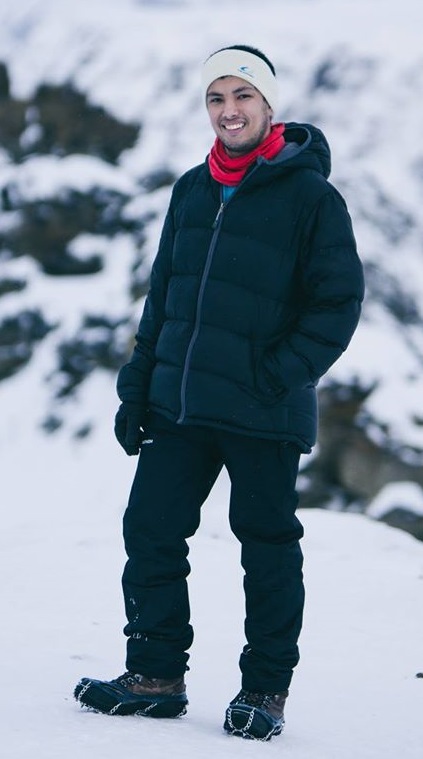
 Anjali's master thesis was titled: "‘Accumulation of Mercury in an Arctic Marine Food Web" and was a part of the Nansen Legacy project. She was an Erasmus Mundus Joint Master student, pursuing the course 'International Master of Science in Marine Biological Resources' (IMBRSea), with a specialization in Marine Environment Health, and enrolled at Ghent University, Belgium. Anjali analysed the concentrations and biomagnification of total mercury and methyl mercury in selected species from a pelagic food web in the Northern Barents Sea, in the Arctic.
Anjali's master thesis was titled: "‘Accumulation of Mercury in an Arctic Marine Food Web" and was a part of the Nansen Legacy project. She was an Erasmus Mundus Joint Master student, pursuing the course 'International Master of Science in Marine Biological Resources' (IMBRSea), with a specialization in Marine Environment Health, and enrolled at Ghent University, Belgium. Anjali analysed the concentrations and biomagnification of total mercury and methyl mercury in selected species from a pelagic food web in the Northern Barents Sea, in the Arctic.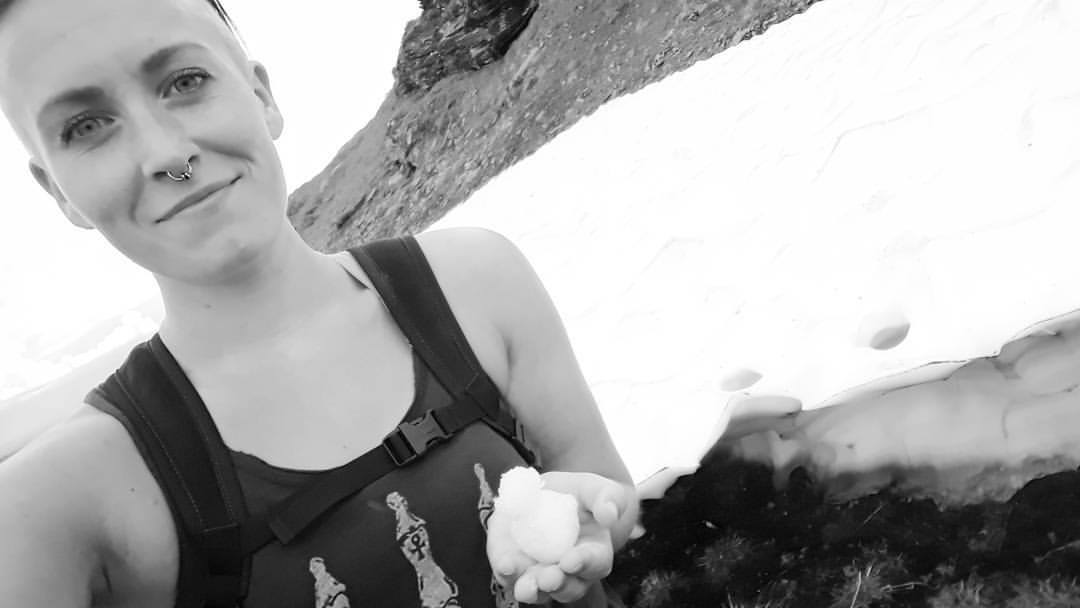 Gunvor's master thesis was titled:""Temperature dependent toxicity of the neonicotinoid imidacloprid on survival and development in an arctic population of the Collembola Hypogastrura viatica." and was a part of the MULTICLIM project.
Gunvor's master thesis was titled:""Temperature dependent toxicity of the neonicotinoid imidacloprid on survival and development in an arctic population of the Collembola Hypogastrura viatica." and was a part of the MULTICLIM project. Clare's master thesis is titled "The effect of dietary preference on the levels of organohalogen contaminants and mercury in Norwegian killer whales (Orcinus orca)". Clare used stable isotope dietary descriptors to show that in contrast to previous assumptions, killer whales in Norway do not just eat herring but some individuals regularly eat seals. Clare compared the levels of contaminants in the fish and seal-eating killer whales, and found much higher levels in the seal-eaters, putting them at a higher risk of adverse health effects.
Clare's master thesis is titled "The effect of dietary preference on the levels of organohalogen contaminants and mercury in Norwegian killer whales (Orcinus orca)". Clare used stable isotope dietary descriptors to show that in contrast to previous assumptions, killer whales in Norway do not just eat herring but some individuals regularly eat seals. Clare compared the levels of contaminants in the fish and seal-eating killer whales, and found much higher levels in the seal-eaters, putting them at a higher risk of adverse health effects.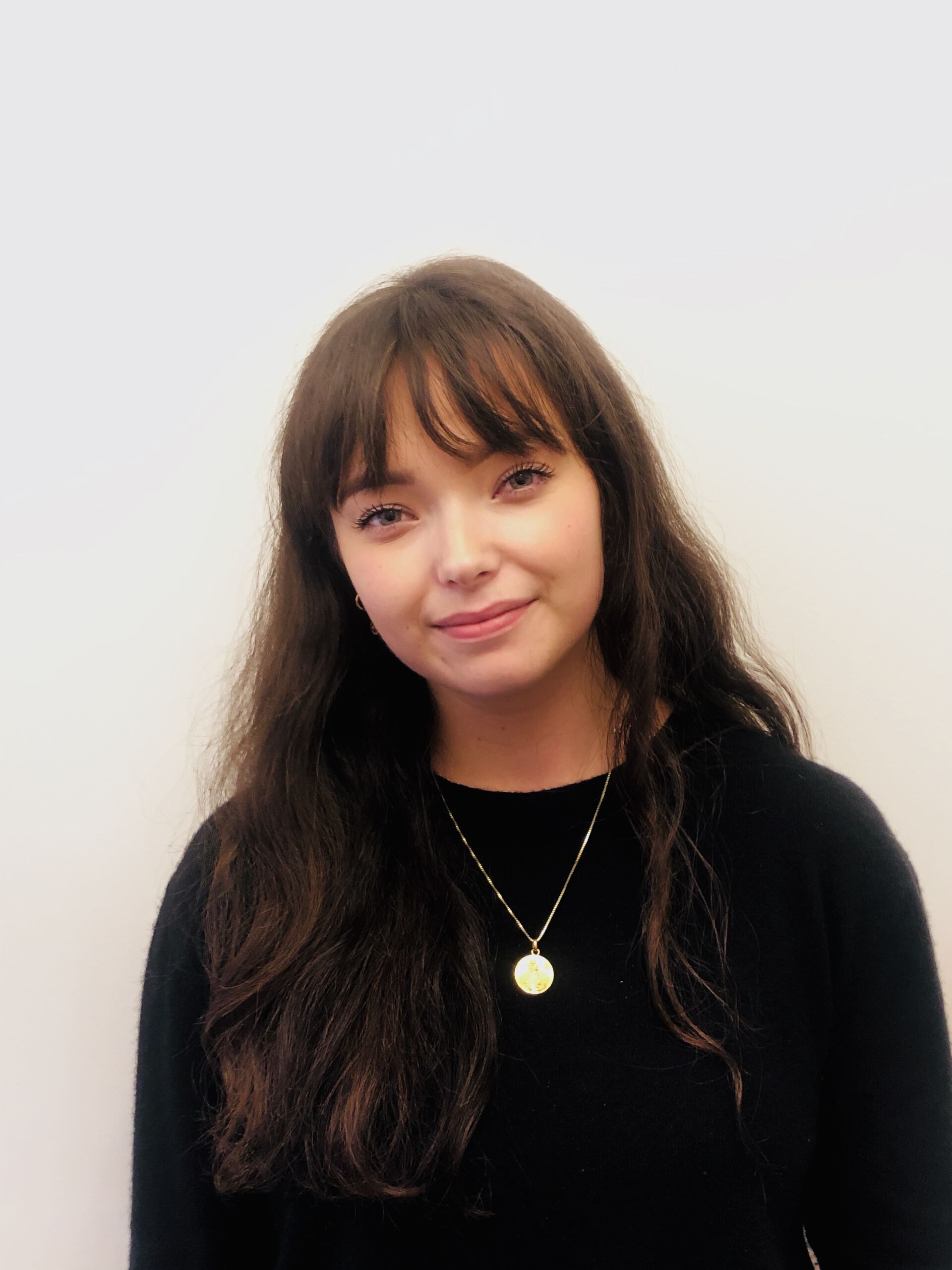 Malin's master thesis is titled "Accumulation of the neonicotinoid insecticide clothianidin in bumblebees (Bombus terrestris)". Neonicotinoids are one of the most widely used insecticide groups globally and have been proved to cause sublethal effects in honeybees, therefore, knowing its effect on our wild pollinators is important.
Malin's master thesis is titled "Accumulation of the neonicotinoid insecticide clothianidin in bumblebees (Bombus terrestris)". Neonicotinoids are one of the most widely used insecticide groups globally and have been proved to cause sublethal effects in honeybees, therefore, knowing its effect on our wild pollinators is important. Nina's master thesis is titled "Environmental contaminants in herring gull (Larus argentatus) and maternal transfer in two colonies in the Oslofjord". Nina compared the dietary descriptors and the levels of contaminants in blood and eggs of two urban colonies of herring gull in the Oslofjord.
Nina's master thesis is titled "Environmental contaminants in herring gull (Larus argentatus) and maternal transfer in two colonies in the Oslofjord". Nina compared the dietary descriptors and the levels of contaminants in blood and eggs of two urban colonies of herring gull in the Oslofjord.  Helene's master thesis is titled "Comparing contaminant occurrence and maternal transfer in Herring Gull and Common Eider in the urban inner Oslofjord, Norway".
Helene's master thesis is titled "Comparing contaminant occurrence and maternal transfer in Herring Gull and Common Eider in the urban inner Oslofjord, Norway". 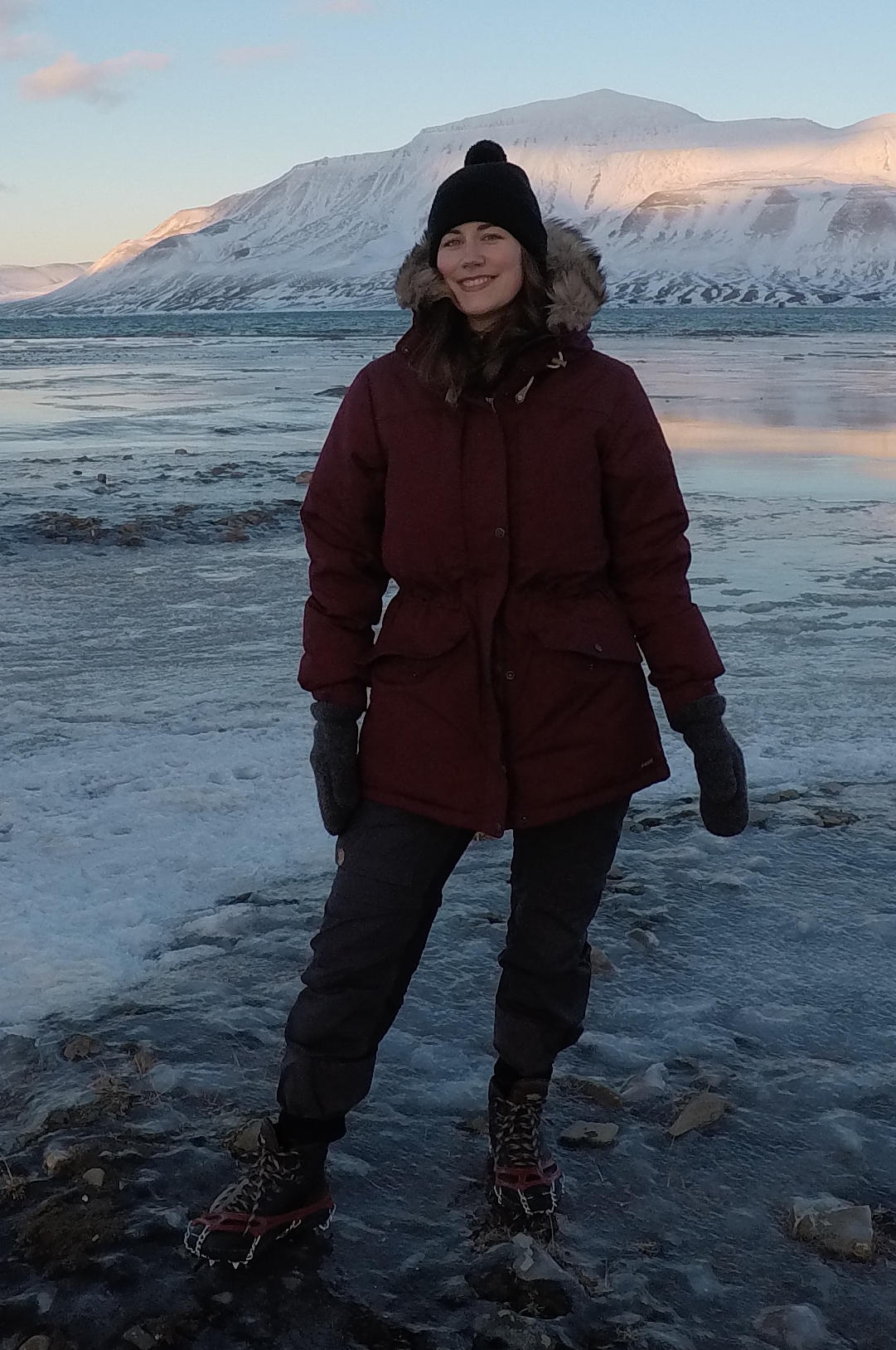 Emelie's master thesis is titled "Effects of seasonal riverine run-off on contaminant accumulation in Arctic littoral amphipods". Emelie investigated seasonal changes in contaminant dynamics and dietary markers in amphipods living in Adventfjorden on Svalbard, due to seasonal runoffs from land. Emelie found a seasonal pattern in contaminants in amphipods. However, this was likely not just due to melting ice, but probably also due to the food source of the amphipods (diatoms) were a more important source of contaminants rather than the sediment.
Emelie's master thesis is titled "Effects of seasonal riverine run-off on contaminant accumulation in Arctic littoral amphipods". Emelie investigated seasonal changes in contaminant dynamics and dietary markers in amphipods living in Adventfjorden on Svalbard, due to seasonal runoffs from land. Emelie found a seasonal pattern in contaminants in amphipods. However, this was likely not just due to melting ice, but probably also due to the food source of the amphipods (diatoms) were a more important source of contaminants rather than the sediment. 
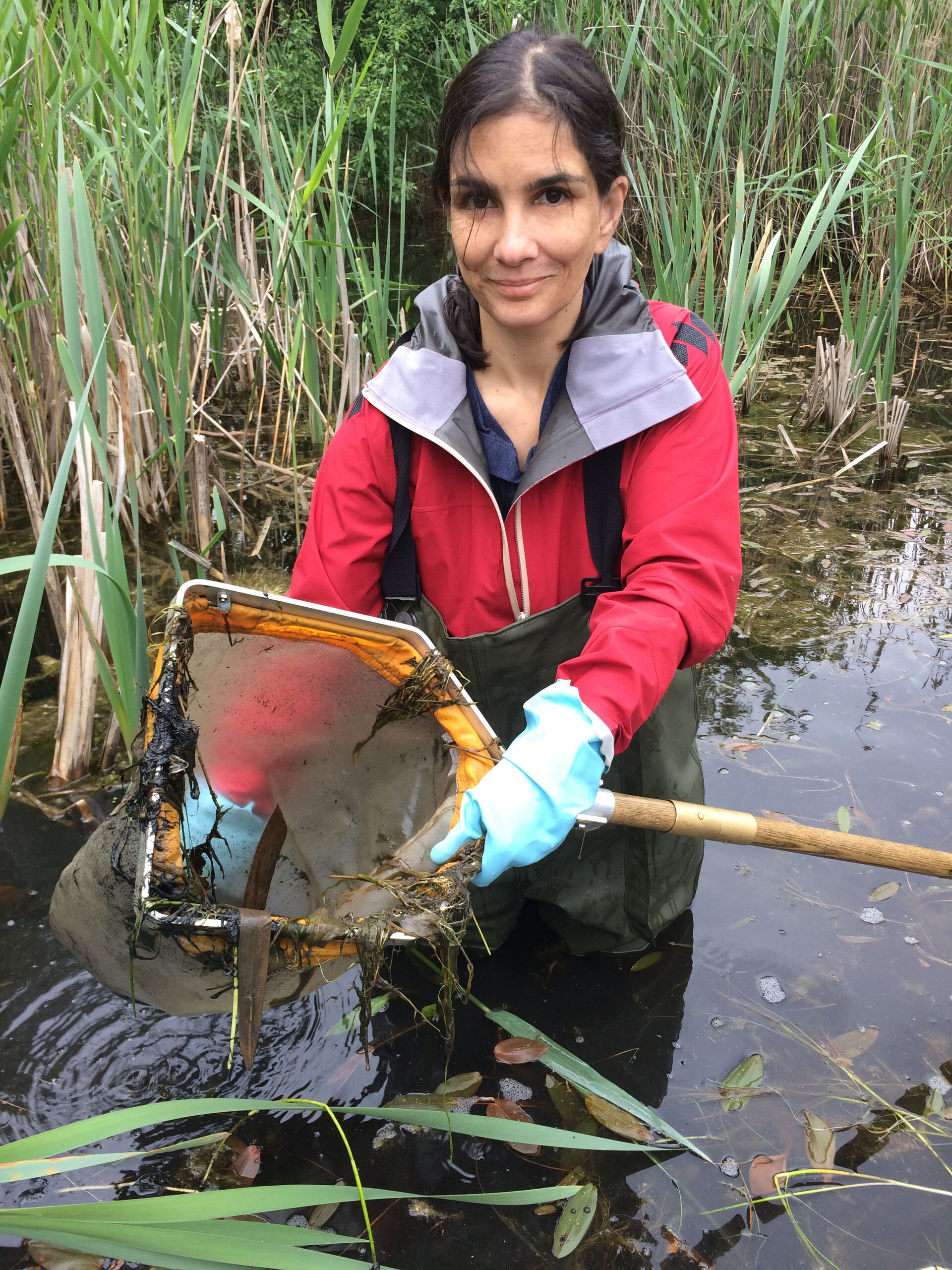 Viviane's master thesis is titled "Source Origin of Polycyclic Aromatic Hydrocarbons (PAHs) in Sediment, and Fate of Organic Contaminants in Dragonfly Larvae (Aeshnidae) from Highway Sedimentation Ponds and Natural Ponds". She studied the bioaccumulation of PAH metabolites and brominated flame retardants (PBDEs) in dragonfly larvae exposed to road and tunnel wash runoff.
Viviane's master thesis is titled "Source Origin of Polycyclic Aromatic Hydrocarbons (PAHs) in Sediment, and Fate of Organic Contaminants in Dragonfly Larvae (Aeshnidae) from Highway Sedimentation Ponds and Natural Ponds". She studied the bioaccumulation of PAH metabolites and brominated flame retardants (PBDEs) in dragonfly larvae exposed to road and tunnel wash runoff.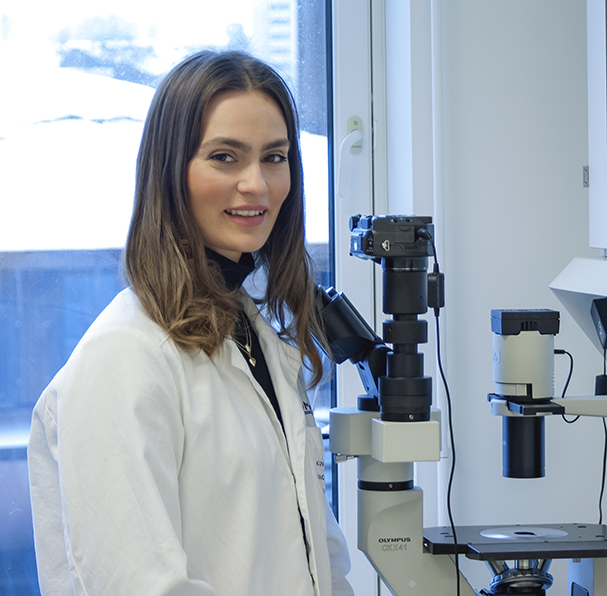 Alexandra's master thesis is titled "Nanoparticles used in dental materials affect cell viability of PC12 cells". Her master's thesis was in collaboration with the Nordic Institute of dental materials (NIOM). She studied the neurotoxic effects of nanoparticles released from dental materials.These particles are added to dental composites to give desired structure, but the biosecurity of these are still not understood. As they are so small, it is suggested that they can cross the blood-brain-barrier and thereby cause damage to nerve cells.
Alexandra's master thesis is titled "Nanoparticles used in dental materials affect cell viability of PC12 cells". Her master's thesis was in collaboration with the Nordic Institute of dental materials (NIOM). She studied the neurotoxic effects of nanoparticles released from dental materials.These particles are added to dental composites to give desired structure, but the biosecurity of these are still not understood. As they are so small, it is suggested that they can cross the blood-brain-barrier and thereby cause damage to nerve cells.  Silje's master thesis is titled "The exposure and accumulation of seabird-derived contaminants and genotoxicity in Collembola from Svalbard ". She studied the transport of marine contaminants via seabird colonies to tundra communities in Svalbard. Many persistent contaminants accumulate and biomagnify up the food chain and, as seabirds often are at a high trophic position, there are high concentrations of pollutants found in many seabirds. Seabirds transfer nutrients and contaminants from sea to land mainly via guano, but also carcasses, egg shells and feathers. Silje studied the contaminant load and bioaccumulation in springtails (Collembola) inhabited below bird cliffs in Svalbard, and also the concentrations in their habitat (soil/vegetation). She also studied the amount of DNA damage in the springtails to establish a possible correlation with the presence and level of contamination.
Silje's master thesis is titled "The exposure and accumulation of seabird-derived contaminants and genotoxicity in Collembola from Svalbard ". She studied the transport of marine contaminants via seabird colonies to tundra communities in Svalbard. Many persistent contaminants accumulate and biomagnify up the food chain and, as seabirds often are at a high trophic position, there are high concentrations of pollutants found in many seabirds. Seabirds transfer nutrients and contaminants from sea to land mainly via guano, but also carcasses, egg shells and feathers. Silje studied the contaminant load and bioaccumulation in springtails (Collembola) inhabited below bird cliffs in Svalbard, and also the concentrations in their habitat (soil/vegetation). She also studied the amount of DNA damage in the springtails to establish a possible correlation with the presence and level of contamination.

 Ane's master thesis is was titled "DNA damage in Arctic seabirds: baseline, sensitivity to oxidative stress and association to contaminants". Birds are important study organisms in ecotoxicology as they are both vectors of transport and victims of pollutants; they possess various physiological adaptions and occupy different trophic levels; and they are important indicators of our oceans' health.
Ane's master thesis is was titled "DNA damage in Arctic seabirds: baseline, sensitivity to oxidative stress and association to contaminants". Birds are important study organisms in ecotoxicology as they are both vectors of transport and victims of pollutants; they possess various physiological adaptions and occupy different trophic levels; and they are important indicators of our oceans' health.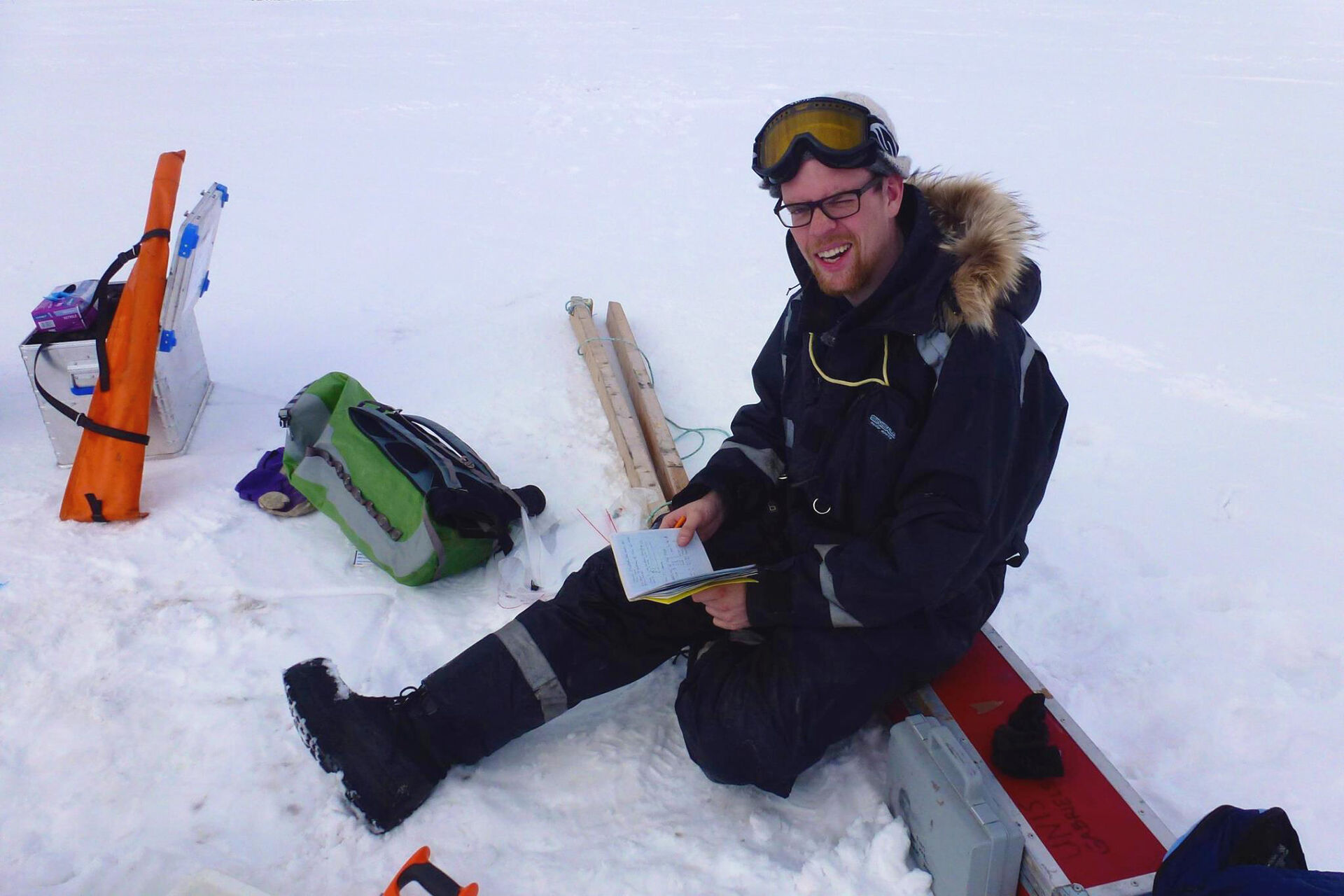 Karl Johan's master thesis is titled "Maternal transfer and biotransformation of persistent organic pollutants (POPs) in hooded seal (Cystophora cristata)". He has analysed maternal milk of hooded seal (Cystophora cristata) from the West Ice population outside Greenland for multiple chlorinated and brominated substances. Most important are the heavy, persistent legacy contaminants like PCB and PBDE. The hooded seal is an interesting model species due to the fact that the pups are born with a large layer of blubber and weaned from their mother after only 4-5 days. During this period, high-lipid rich milk (>60%), is transferred to the pups carrying the lipophilic contaminants that are excreted from the mother.
Karl Johan's master thesis is titled "Maternal transfer and biotransformation of persistent organic pollutants (POPs) in hooded seal (Cystophora cristata)". He has analysed maternal milk of hooded seal (Cystophora cristata) from the West Ice population outside Greenland for multiple chlorinated and brominated substances. Most important are the heavy, persistent legacy contaminants like PCB and PBDE. The hooded seal is an interesting model species due to the fact that the pups are born with a large layer of blubber and weaned from their mother after only 4-5 days. During this period, high-lipid rich milk (>60%), is transferred to the pups carrying the lipophilic contaminants that are excreted from the mother.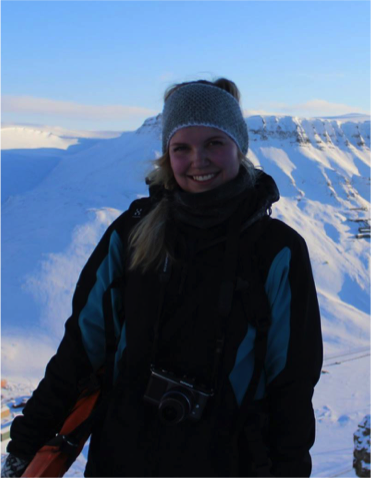 Randi's master thesis is titled “Levels, patterns and maternal transfer of per- and polyfluorinated compounds (PFCs), and their associations with thyroid hormones in hooded seal (Cystophora cristata) mother-pup pairs from the West-Ice". PFCs are environmentally persistent contaminants that are present in the Arctic and with a potential to bioaccumulate and biomagnify in food webs. The aim of this study was to investigate levels and patterns of PFCs in hooded seal mother-pup pairs from the West Ice (east of Greenland), determine if these contaminants are transferred from mother to pup via milk and placenta, and to investigate possible associations between concentrations of PFCs and thyroid hormone concentrations (T3 and T4) in blood. The hooded seal has a high level in the Arctic food web and a short lactation period (only 3-4 days) with transfer of a very lipid rich milk (>60%). This makes this species a good model to investigate the transfer of chemicals through milk. No studies have previously been done to investigate levels or maternal transfer of PFCs in hooded seals, which makes this project particularly interesting.
Randi's master thesis is titled “Levels, patterns and maternal transfer of per- and polyfluorinated compounds (PFCs), and their associations with thyroid hormones in hooded seal (Cystophora cristata) mother-pup pairs from the West-Ice". PFCs are environmentally persistent contaminants that are present in the Arctic and with a potential to bioaccumulate and biomagnify in food webs. The aim of this study was to investigate levels and patterns of PFCs in hooded seal mother-pup pairs from the West Ice (east of Greenland), determine if these contaminants are transferred from mother to pup via milk and placenta, and to investigate possible associations between concentrations of PFCs and thyroid hormone concentrations (T3 and T4) in blood. The hooded seal has a high level in the Arctic food web and a short lactation period (only 3-4 days) with transfer of a very lipid rich milk (>60%). This makes this species a good model to investigate the transfer of chemicals through milk. No studies have previously been done to investigate levels or maternal transfer of PFCs in hooded seals, which makes this project particularly interesting. Andrea was a master student in Biology (Biodiversity and Evolution) at the University of Milan. He completed a master thesis project at the University of Oslo as an exchange student with the Erasmus+ program. The aim of his project was to investigate if a long term exposure to copper (a common marine contaminant) combined with fish hormones (natural stressors that simulate predation) affects isotope fractionation of carbon and nitrogen in Tigriopus brevicornis, a coastal copepod.
Andrea was a master student in Biology (Biodiversity and Evolution) at the University of Milan. He completed a master thesis project at the University of Oslo as an exchange student with the Erasmus+ program. The aim of his project was to investigate if a long term exposure to copper (a common marine contaminant) combined with fish hormones (natural stressors that simulate predation) affects isotope fractionation of carbon and nitrogen in Tigriopus brevicornis, a coastal copepod.